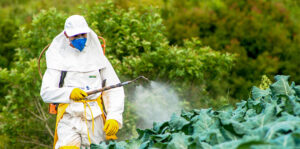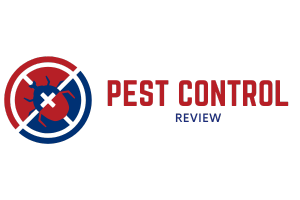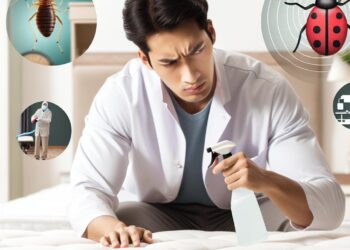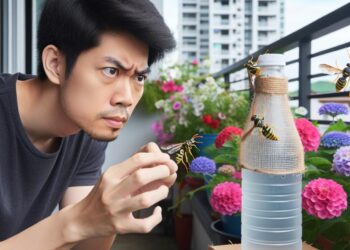Integrated Pest Management (IPM): Protecting Your Home or Business the Right Way
As people become increasingly aware of the impact of chemicals on the environment and human health, there is a growing interest in more sustainable approaches to pest management. Integrated pest management (IPM) is one such approach that is gaining popularity in homes and businesses. This guide will explore what IPM is, its benefits, and how to implement it in your home or business.
What is Integrated Pest Management (IPM)?
Integrated Pest Management (IPM) is an approach to pest management that involves a combination of methods to control pests while minimizing the use of harmful chemicals. The idea behind IPM is to create an environment that is less hospitable to pests, making it harder for them to survive and reproduce.

IPM involves four main steps:
- Identifying and monitoring pests: The first step in IPM is to identify the pests that are present and monitor their populations. This information is used to determine the severity of the infestation and to decide which control measures are needed.
- Prevention: The next step is to prevent pests from entering your home or business in the first place. This involves making your property less hospitable to pests by eliminating sources of food, water and shelter.
- Control: If pests are present, the next step is to control their populations using a combination of methods, including physical, biological and chemical controls. Physical controls involve using barriers or traps to prevent pests from entering your property, while biological controls involve introducing natural predators or parasites to control pest populations. Chemical controls involve using pesticides as a last resort.
- Evaluation: Finally, the effectiveness of the IPM program is evaluated to determine whether further adjustments are needed.

Source: Google Images
Benefits of Integrated Pest Management
There are several benefits of using an IPM approach to pest management. Some of these benefits include:
- Reduced pesticide use: IPM emphasizes the use of non-chemical methods to control pests, reducing the need for pesticides. This is not only better for the environment, but also reduces the risk of exposure to harmful chemicals for humans and pets.
- Cost-effective: While the initial cost of implementing an IPM program may be higher than traditional pest control methods, it is often more cost-effective in the long run. By using a combination of methods to control pests, IPM reduces the likelihood of future infestations, saving you money on repeated treatments.
- Sustainable: IPM is a more sustainable approach to pest management as it focuses on creating an environment that is less hospitable to pests rather than relying on chemicals. This is better for the environment and reduces the risk of harm to non-target species.
How to Implement IPM in Your Home or Business
Implementing an IPM program in your home or business involves several steps:
- Identify pests: The first step in implementing an IPM program is to identify the pests that are present. This can be done through visual inspections or by using monitoring devices such as sticky traps.
- Determine severity of infestation: Once pests have been identified, it is important to determine the severity of the infestation. This information is used to decide which control measures are needed.
- Implement prevention measures: The next step is to implement prevention measures to make your property less hospitable to pests. This may involve sealing cracks and crevices, eliminating sources of food and water, and reducing clutter.

- Implement control measures: If pests are present, the next step is to implement control measures. This may involve using physical controls such as traps or barriers, biological controls such as introducing natural predators, or chemical controls as a last resort.
- Evaluate effectiveness: Finally, the effectiveness of the IPM program should be evaluated to determine whether further adjustments are needed.
Integrated Pest Management (IPM) is a sustainable approach to pest management that is becoming increasingly popular in homes and businesses across the UK. By implementing an IPM program, you can control pests while minimizing the use of harmful chemicals, reducing costs, and creating a more sustainable environment.
When it comes to implementing an IPM program, it is important to work with a professional pest control company that specializes in IPM. They can help you identify the pests that are present, determine the severity of the infestation, and develop a customized IPM program that is tailored to your specific needs.
In addition to working with a professional pest control company, there are several things you can do to support IPM in your home or business. These include:
- Educating yourself: Take the time to learn more about IPM and the different control methods that are available. This will help you make informed decisions about pest management in your home or business.
- Practicing good sanitation: Keep your property clean and free of clutter to eliminate hiding places and sources of food and water for pests.
- Monitoring your property: Regularly inspect your property for signs of pests, and use monitoring devices such as sticky traps to help identify pest populations.
- Supporting natural predators: Encourage natural predators such as birds, bats, and ladybugs to help control pest populations on your property.

By working together to implement IPM, we can create a more sustainable approach to pest management that benefits both people and the environment. Whether you are a homeowner or a business owner, there are many ways you can support IPM and create a pest-free environment that is safe and healthy for everyone.
It is also worth noting that IPM is not just a reactive approach to pest management. It is important to implement prevention measures to make your property less attractive to pests in the first place. This can include sealing cracks and crevices, removing debris and clutter, and properly storing food and waste.
Another key aspect of IPM is regular monitoring and evaluation. Pest populations can fluctuate depending on a variety of factors such as weather, seasonality, and changes to the environment. Regular monitoring and evaluation can help identify changes in pest populations and determine if additional control measures are needed.

Conclusion
By implementing IPM in your home or business, you can protect your property from pests in a safe and effective way. Remember to focus on prevention, monitoring, and control, and use non-chemical methods whenever possible. With IPM, you can enjoy a pest-free environment while minimizing the impact on your health and the environment.















